Blog
Common Running Injuries
 Research has shown the majority of people who enjoy running and jogging will experience a minimum of one injury per year. This is due to improper training techniques or failing to warm the muscles up adequately before running. The thought of injuries incurred while running, will typically affect most joggers negatively, depending on the severity of the injury. Serious mishaps may represent mandatory time off from this sport, so proper healing can commence. Some of the injuries that are feared is Achilles tendinitis, which generally affects the back of the heel and calf. This may be able to prevent by stretching the Achilles tendon, and this is often accomplished by standing on a step and raising the heel up, followed by lowering it down. Additionally, shin splints is a common injury that many runners endure, and this may be prevented by wearing the correct shoes while running, in addition to strengthening the calves. Please speak with a podiatrist if you would like additional information about how to prevent running injuries.
Research has shown the majority of people who enjoy running and jogging will experience a minimum of one injury per year. This is due to improper training techniques or failing to warm the muscles up adequately before running. The thought of injuries incurred while running, will typically affect most joggers negatively, depending on the severity of the injury. Serious mishaps may represent mandatory time off from this sport, so proper healing can commence. Some of the injuries that are feared is Achilles tendinitis, which generally affects the back of the heel and calf. This may be able to prevent by stretching the Achilles tendon, and this is often accomplished by standing on a step and raising the heel up, followed by lowering it down. Additionally, shin splints is a common injury that many runners endure, and this may be prevented by wearing the correct shoes while running, in addition to strengthening the calves. Please speak with a podiatrist if you would like additional information about how to prevent running injuries.
Exercising your feet regularly with the proper foot wear is a great way to prevent injuries. If you have any concerns about your feet, contact Dr. Kevin Davis of Davis Foot & Ankle Centers. Our doctor will treat your foot and ankle needs.
How to Prevent Running Injuries
Many common running injuries are caused by overuse and overtraining. When the back of the kneecap starts wearing out and starts causing pain in your knee, this is commonly referred to as runner’s knee. Runner’s knee is a decrease in strength in your quadriceps and can occur if you’re not wearing properly fitted or supporting shoes. To prevent runner’s knee, focusing on hip strengthening is a good idea, as well as strengthening your quads to keep the kneecaps aligned.
What Are Some Causes of Running Injuries?
- One cause of a common running injury is called iliotibial band syndrome.
- Plantar fasciitis is also another common injury.
- Stress fractures can occur from overtraining, lack of calcium, or even your running style.
Best Ways to Prevent Running Injuries
- Wear footwear that fits properly and suits your running needs.
- Running shoes are the only protective gear that runners have to safeguard them from injury.
- Make a training schedule. Adding strengthening exercises as well as regular stretching can help keep you strong and limber and can lessen the possibility of injuries.
- Stretching keeps muscles limber; this will help you gain better flexibility.
If you have any questions please feel free to contact one of our offices located in Springfield, and White House, TN, . We offer the newest diagnostic and treatment technologies for all your foot and ankle needs.
Read more about Preventing Running InjuriesThe Purpose of Shockwave Therapy
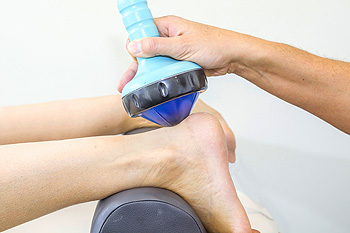 There is a technique that is referred to as extracorporeal shock wave therapy, which is also known as ESWT, that may aid in treating certain foot conditions such as plantar fasciitis. There are two types of shock wave treatments that may be used, and these are referred to as low-energy and high-energy treatments. Low-energy treatments are typically administered over a period of time and may produce mild discomfort. The opposite may be true of the latter, and is often performed in a single treatment, which may often require general anesthesia. The purpose of these treatments is to promote healing of the tissues and surrounding areas affected by the foot condition. Recent research has shown little effectiveness of these treatments and many patients may still have pain after treatment. It’s important to speak with a podiatrist if you would like additional information about shockwave therapy.
There is a technique that is referred to as extracorporeal shock wave therapy, which is also known as ESWT, that may aid in treating certain foot conditions such as plantar fasciitis. There are two types of shock wave treatments that may be used, and these are referred to as low-energy and high-energy treatments. Low-energy treatments are typically administered over a period of time and may produce mild discomfort. The opposite may be true of the latter, and is often performed in a single treatment, which may often require general anesthesia. The purpose of these treatments is to promote healing of the tissues and surrounding areas affected by the foot condition. Recent research has shown little effectiveness of these treatments and many patients may still have pain after treatment. It’s important to speak with a podiatrist if you would like additional information about shockwave therapy.
Shockwave therapy is a treatment commonly used to treat various injuries and conditions, particularly plantar fasciitis in the feet. To learn more, consult with Dr. Kevin Davis from Davis Foot & Ankle Centers. Our doctor can provide the care you need to keep you pain-free and on your feet.
Shockwave Therapy
Shockwave therapy is a new treatment option designed to treat bone conditions such as tennis elbow, shoulder pain, and others. Shockwave therapy uses high intensity sound waves that are directed to the affected tissues of the body with pinpoint accuracy. The effects are very beneficial, leading to a production of collagen fibers, eliminating inflammation.
Who Benefits from Shockwave?
Shockwave is recommended for patients suffering from heel pain and associated problems. Heel pain is a common condition which can be caused by obesity, overexertion, and spending a substantial amount of time on hard floors with your feet exposed and unsupported.
Fast and Easy
The therapy is actually a simple process that can leave patients feeling better the very next day. Shockwave therapy is not as dramatic as it sounds. It enables more blood flow to effected areas, addressing the source of the problem and allowing treatment to last for a long time.
Treatment & Recovery Time
Shockwave treatment will enable your feet to recover quickly. This is especially important since surgery is not required. It is cost effective and does not require the use of anesthesia. This treatment is a better option to surgery, since it is proven safe.
If you have any questions, please feel free to contact one of our offices located in Springfield, and White House, TN, . We offer the newest diagnostic and treatment technologies for all your foot and ankle needs.
Read more about Treating Heel Pain with Shockwave TherapySymptoms of a Heel Spur
 A heel spur is defined as a small bony protrusion that extends from the heel to the sole of the foot. Typical reasons for the condition to develop may be due to an injury, which may tear a portion of the heel bone, muscle, or ligament strains. Hard calcium deposits may develop under the heel, gradually forming a heel spur. People who are overweight, or those who participate in running and jumping activities may be more susceptible in developing heel spurs, in addition to those patients who wear shoes that do not fit correctly. There are several symptoms that may accompany this ailment, including pain that is felt in the heel for the majority of the day, inflammation, and tenderness. If you feel you may have a heel spur, it’s suggested to consult with a podiatrist, who can perform a proper diagnosis followed by advice on correct treatment options.
A heel spur is defined as a small bony protrusion that extends from the heel to the sole of the foot. Typical reasons for the condition to develop may be due to an injury, which may tear a portion of the heel bone, muscle, or ligament strains. Hard calcium deposits may develop under the heel, gradually forming a heel spur. People who are overweight, or those who participate in running and jumping activities may be more susceptible in developing heel spurs, in addition to those patients who wear shoes that do not fit correctly. There are several symptoms that may accompany this ailment, including pain that is felt in the heel for the majority of the day, inflammation, and tenderness. If you feel you may have a heel spur, it’s suggested to consult with a podiatrist, who can perform a proper diagnosis followed by advice on correct treatment options.
Heel spurs can be incredibly painful and sometimes may make you unable to participate in physical activities. To get medical care for your heel spurs, contact Dr. Kevin Davis from Davis Foot & Ankle Centers. Our doctor will do everything possible to treat your condition.
Heels Spurs
Heel spurs are formed by calcium deposits on the back of the foot where the heel is. This can also be caused by small fragments of bone breaking off one section of the foot, attaching onto the back of the foot. Heel spurs can also be bone growth on the back of the foot and may grow in the direction of the arch of the foot.
Older individuals usually suffer from heel spurs and pain sometimes intensifies with age. One of the main condition's spurs are related to is plantar fasciitis.
Pain
The pain associated with spurs is often because of weight placed on the feet. When someone is walking, their entire weight is concentrated on the feet. Bone spurs then have the tendency to affect other bones and tissues around the foot. As the pain continues, the feet will become tender and sensitive over time.
Treatments
There are many ways to treat heel spurs. If one is suffering from heel spurs in conjunction with pain, there are several methods for healing. Medication, surgery, and herbal care are some options.
If you have any questions feel free to contact one of our offices located in Springfield, and White House, TN, . We offer the latest in diagnostic and treatment technology to meet your needs.
Read more about Heel SpursWhat May Be Causing Your Cracked Heels
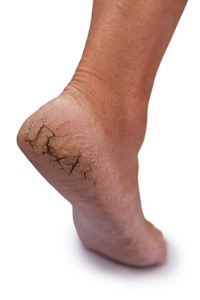 According to a survey, “20 percent of adults in the United States experience cracked skin on their feet.” Cracked heels are the result of an insufficient amount of moisture on the feet. In severe cases, cracks can eventually become sore and start to bleed. There are many reasons why a person’s feet may begin to dry out. Although more obvious causes for dry skin are cold weather or dehydration, many may not know that taking hot baths and hot showers can cause your skin to dry out. If your cracked heels are caused by an underlying medical condition, it is important that you do not treat them on your own. You may need the help of a podiatrist to treat your dry skin, regardless of your medical history. He or she will be able to recommend the best treatment option for you based on your consultation.
According to a survey, “20 percent of adults in the United States experience cracked skin on their feet.” Cracked heels are the result of an insufficient amount of moisture on the feet. In severe cases, cracks can eventually become sore and start to bleed. There are many reasons why a person’s feet may begin to dry out. Although more obvious causes for dry skin are cold weather or dehydration, many may not know that taking hot baths and hot showers can cause your skin to dry out. If your cracked heels are caused by an underlying medical condition, it is important that you do not treat them on your own. You may need the help of a podiatrist to treat your dry skin, regardless of your medical history. He or she will be able to recommend the best treatment option for you based on your consultation.
Cracked heels are unsightly and can cause further damage to your shoes and feet. If you have any concerns, contact Dr. Kevin Davis from Davis Foot & Ankle Centers. Our doctor can provide the care you need to keep you pain-free and on your feet.
Cracked Heels
Cracked heels appear unappealing and can make it harder for you walk around in sandals. Aside from looking unpleasant, cracked heels can also tear stockings, socks, and wear out your shoes. There are several methods to help restore a cracked heel and prevent further damage.
How Do You Get Them?
Dry skin is the number one culprit in creating cracked heels. Many athletes, walkers, joggers, and even swimmers suffer from cracked heels. Age and skin oil production play a role to getting cracked heels as well.
Promote Healing
Over the counter medicines can help, especially for those that need instant relief or who suffer from chronic dry feet.
Wear Socks – Wearing socks with medicated creams helps lock in moisture.
Moisturizers – Applying both day and night will help alleviate dryness which causes cracking.
Pumice Stones – These exfoliate and remove dead skin, which allows for smoother moisturizer application and better absorption into the skin.
Change in Diet
Eating healthy with a well-balanced diet will give the skin a fresh and radiant look. Your body responds to the kinds of food you ingest. Omega-3 fatty acids and zinc supplements can also revitalize skin tissue.
Most importantly, seek professional help if unsure how to proceed in treating cracked heels. A podiatrist will help you with any questions or information needed.
If you have any questions, please feel free to contact one of our offices located in Springfield, and White House, TN, . We offer the newest diagnostic and treatment technologies for all your foot care needs.
Read more about Solutions for Cracked HeelsA Common Cause of Foot Ulcers
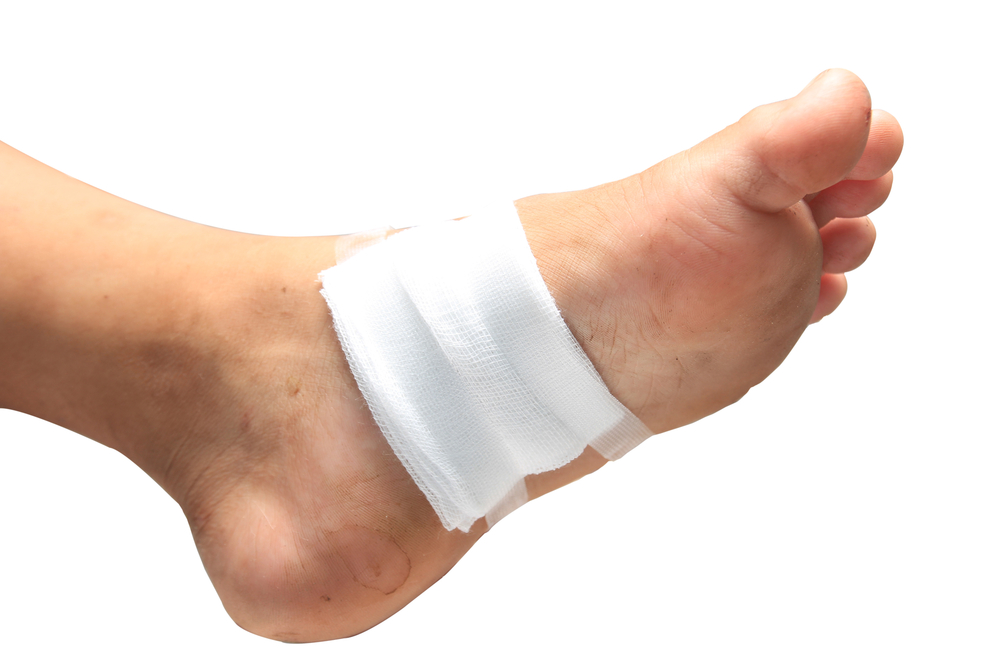 Foot ulcers may develop as a result of poorly managed diabetes. The skin will typically disintegrate, and the layers underneath will become exposed. Common areas on the foot where this condition may develop include the balls of the feet and under the big toe. In patients with severe foot ulcers, the bones of the feet may often become affected and may generally produce pain and discomfort. Research has shown the importance in keeping as much weight as possible off of your feet; this reportedly prevents further infections from developing. Wearing shoe inserts or diabetic shoes may be beneficial in providing additional protection the feet may need for proper healing. If you are afflicted with a foot ulcer, please consult with a podiatrist for information on correct treatment remedies.
Foot ulcers may develop as a result of poorly managed diabetes. The skin will typically disintegrate, and the layers underneath will become exposed. Common areas on the foot where this condition may develop include the balls of the feet and under the big toe. In patients with severe foot ulcers, the bones of the feet may often become affected and may generally produce pain and discomfort. Research has shown the importance in keeping as much weight as possible off of your feet; this reportedly prevents further infections from developing. Wearing shoe inserts or diabetic shoes may be beneficial in providing additional protection the feet may need for proper healing. If you are afflicted with a foot ulcer, please consult with a podiatrist for information on correct treatment remedies.
Wound care is an important part in dealing with diabetes. If you have diabetes and a foot wound or would like more information about wound care for diabetics, consult with Dr. Kevin Davis from Davis Foot & Ankle Centers. Our doctor will assess your condition and provide you with quality foot and ankle treatment.
What Is Wound Care?
Wound care is the practice of taking proper care of a wound. This can range from the smallest to the largest of wounds. While everyone can benefit from proper wound care, it is much more important for diabetics. Diabetics often suffer from poor blood circulation which causes wounds to heal much slower than they would in a non-diabetic.
What Is the Importance of Wound Care?
While it may not seem apparent with small ulcers on the foot, for diabetics, any size ulcer can become infected. Diabetics often also suffer from neuropathy, or nerve loss. This means they might not even feel when they have an ulcer on their foot. If the wound becomes severely infected, amputation may be necessary. Therefore, it is of the upmost importance to properly care for any and all foot wounds.
How to Care for Wounds
The best way to care for foot wounds is to prevent them. For diabetics, this means daily inspections of the feet for any signs of abnormalities or ulcers. It is also recommended to see a podiatrist several times a year for a foot inspection. If you do have an ulcer, run the wound under water to clear dirt from the wound; then apply antibiotic ointment to the wound and cover with a bandage. Bandages should be changed daily and keeping pressure off the wound is smart. It is advised to see a podiatrist, who can keep an eye on it.
If you have any questions, please feel free to contact one of our offices located in Springfield, and White House, TN, . We offer the newest diagnostic and treatment technologies for all your foot care needs.
Read more about Wound CareChildren and Plantar Warts
 If you find that your child complains of pain in the heel area of the foot, you may want to see if a plantar wart is present. A wart that develops and grows on the heel of the foot is referred to as a plantar wart. Despite the fact that it is known to be a harmless skin growth, it may generate severe pain and discomfort while walking. While many types of warts are visible on other parts of the body, a plantar wart grows inward as a result of the pressure the heel endures while walking, and may be difficult to notice. It is generally contagious, and may easily spread to other parts of the body. It’s suggested that your child refrains from sharing towels in addition to wearing protective shoes in public pools and shower areas. If your child develops a fever or if you notice liquid that drains from the wart, it’s advised to consult with a podiatrist as quickly as possible to learn about correct treatment options.
If you find that your child complains of pain in the heel area of the foot, you may want to see if a plantar wart is present. A wart that develops and grows on the heel of the foot is referred to as a plantar wart. Despite the fact that it is known to be a harmless skin growth, it may generate severe pain and discomfort while walking. While many types of warts are visible on other parts of the body, a plantar wart grows inward as a result of the pressure the heel endures while walking, and may be difficult to notice. It is generally contagious, and may easily spread to other parts of the body. It’s suggested that your child refrains from sharing towels in addition to wearing protective shoes in public pools and shower areas. If your child develops a fever or if you notice liquid that drains from the wart, it’s advised to consult with a podiatrist as quickly as possible to learn about correct treatment options.
Plantar warts can be very uncomfortable. If you need your feet checked, contact Dr. Kevin Davis from Davis Foot & Ankle Centers. Our doctor will assist you with all of your foot and ankle needs.
About Plantar Warts
Plantar warts are the result of HPV, or human papillomavirus, getting into open wounds on the feet. They are mostly found on the heels or balls of the feet.
While plantar warts are generally harmless, those experiencing excessive pain or those suffering from diabetes or a compromised immune system require immediate medical care. Plantar warts are easily diagnosed, usually through scraping off a bit of rough skin or by getting a biopsy.
Symptoms
- Lesions on the bottom of your feet, usually rough and grainy
- Hard or thick callused spots
- Wart seeds, which are small clotted blood vessels that look like little black spots
- Pain, discomfort, or tenderness of your feet when walking or standing
Treatment
- Freezing
- Electric tool removal
- Laser Treatment
- Topical Creams (prescription only)
- Over-the-counter medications
To help prevent developing plantar warts, avoid walking barefoot over abrasive surfaces that can cause cuts or wounds for HPV to get into. Avoiding direct contact with other warts, as well as not picking or rubbing existing warts, can help prevent the further spread of plantar warts. However, if you think you have developed plantar warts, speak to your podiatrist. He or she can diagnose the warts on your feet and recommend the appropriate treatment options.
If you have any questions please feel free to contact one of our offices located in Springfield, and White House, TN, . We offer the newest diagnostic and treatment technologies for all your foot and ankle needs.
Read more about All About Plantar WartsCan High Heels Damage the Feet?
 Many women choose to wear high heels to accent the shape of the foot, despite the pain that may be endured. Additionally, other foot conditions may develop as a result of wearing this type of shoe, including blisters, deformities involving the toes, bunions, and strained calf muscles. Research has shown that when they are worn occasionally, it may give the feet the needed time to rest and heal. It may be beneficial to wear flat shoes or a more comfortable style that may include shoes that are wider, which may give the toes adequate room to move about in. Moderate relief may be found when gentle stretching exercises are performed. This may be accomplished by rolling your foot over a tennis ball, which will stretch the bottom of the foot, in addition to having your heel drop as you stand on a step, which will aid in stretching the heel. If you would like additional information about how high heels affect the feet, please consult with a podiatrist.
Many women choose to wear high heels to accent the shape of the foot, despite the pain that may be endured. Additionally, other foot conditions may develop as a result of wearing this type of shoe, including blisters, deformities involving the toes, bunions, and strained calf muscles. Research has shown that when they are worn occasionally, it may give the feet the needed time to rest and heal. It may be beneficial to wear flat shoes or a more comfortable style that may include shoes that are wider, which may give the toes adequate room to move about in. Moderate relief may be found when gentle stretching exercises are performed. This may be accomplished by rolling your foot over a tennis ball, which will stretch the bottom of the foot, in addition to having your heel drop as you stand on a step, which will aid in stretching the heel. If you would like additional information about how high heels affect the feet, please consult with a podiatrist.
High heels have a history of causing foot and ankle problems. If you have any concerns about your feet or ankles, contact Dr. Kevin Davis from Davis Foot & Ankle Centers. Our doctor can provide the care you need to keep you pain-free and on your feet.
Effects of High Heels on the Feet
High heels are popular shoes among women because of their many styles and societal appeal. Despite this, high heels can still cause many health problems if worn too frequently.
Which Parts of My Body Will Be Affected by High Heels?
- Ankle Joints
- Achilles Tendon – May shorten and stiffen with prolonged wear
- Balls of the Feet
- Knees – Heels cause the knees to bend constantly, creating stress on them
- Back – They decrease the spine’s ability to absorb shock, which may lead to back pain. The vertebrae of the lower back may compress.
What Kinds of Foot Problems Can Develop from Wearing High Heels?
- Corns
- Calluses
- Hammertoe
- Bunions
- Morton’s Neuroma
- Plantar Fasciitis
How Can I Still Wear High Heels and Maintain Foot Health?
If you want to wear high heeled shoes, make sure that you are not wearing them every day, as this will help prevent long term physical problems. Try wearing thicker heels as opposed to stilettos to distribute weight more evenly across the feet. Always make sure you are wearing the proper shoes for the right occasion, such as sneakers for exercising. If you walk to work, try carrying your heels with you and changing into them once you arrive at work. Adding inserts to your heels can help cushion your feet and absorb shock. Full foot inserts or metatarsal pads are available.
If you have any questions please feel free to contact one of our offices located in Springfield, and White House, TN, . We offer the newest diagnostic and treatment technologies for all your foot and ankle needs.
Read more about Effect of High Heels on the FeetCan Toenail Fungus Be Prevented?
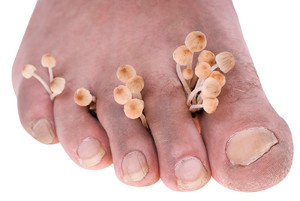 Many people are unaware that they may have toenail fungus, and this may often be a result of a lack of pain and discomfort. Common symptoms that are associated with this ailment may include the toenail becoming dry and brittle, the nail appearing yellow and thick, or a separation from the nail and the nail bed. It’s important to take proper care of your feet, which may possibly avoid this unsightly condition from developing. There are several ways to accomplish this, including wearing shoes that fit properly, trimming the toenails correctly, and wearing appropriate shoes in the shower and pool areas. If you are afflicted with toenail fungus, it’s suggested to speak with a podiatrist who can provide proper guidance for the best treatment options.
Many people are unaware that they may have toenail fungus, and this may often be a result of a lack of pain and discomfort. Common symptoms that are associated with this ailment may include the toenail becoming dry and brittle, the nail appearing yellow and thick, or a separation from the nail and the nail bed. It’s important to take proper care of your feet, which may possibly avoid this unsightly condition from developing. There are several ways to accomplish this, including wearing shoes that fit properly, trimming the toenails correctly, and wearing appropriate shoes in the shower and pool areas. If you are afflicted with toenail fungus, it’s suggested to speak with a podiatrist who can provide proper guidance for the best treatment options.
For more information about treatment, contact Dr. Kevin Davis of Davis Foot & Ankle Centers. Our doctor can provide the care you need to keep you pain-free and on your feet.
Toenail Fungus Treatment
Toenail fungus is a condition that affects many people and can be especially hard to get rid of. Fortunately, there are several methods to go about treating and avoiding it.
Antifungals & Deterrence
Oral antifungal medicine has been shown to be effective in many cases. It is important to consult with a podiatrist to determine the proper regiment for you, or potentially explore other options.
Applying foot powder on the feet and shoes helps keep the feet free of moisture and sweat.
Sandals or open toed shoes – Wearing these will allow air movement and help keep feet dry. They also expose your feet to light, which fungus cannot tolerate. Socks with moisture wicking material also help as well.
If you have any questions please feel free to contact one of our offices located in Springfield, and White House, TN, . We offer the newest diagnostic tools and technology to treat your foot and ankle needs.
Read more about Toenail FungusPossible Treatments Options for a Broken Ankle
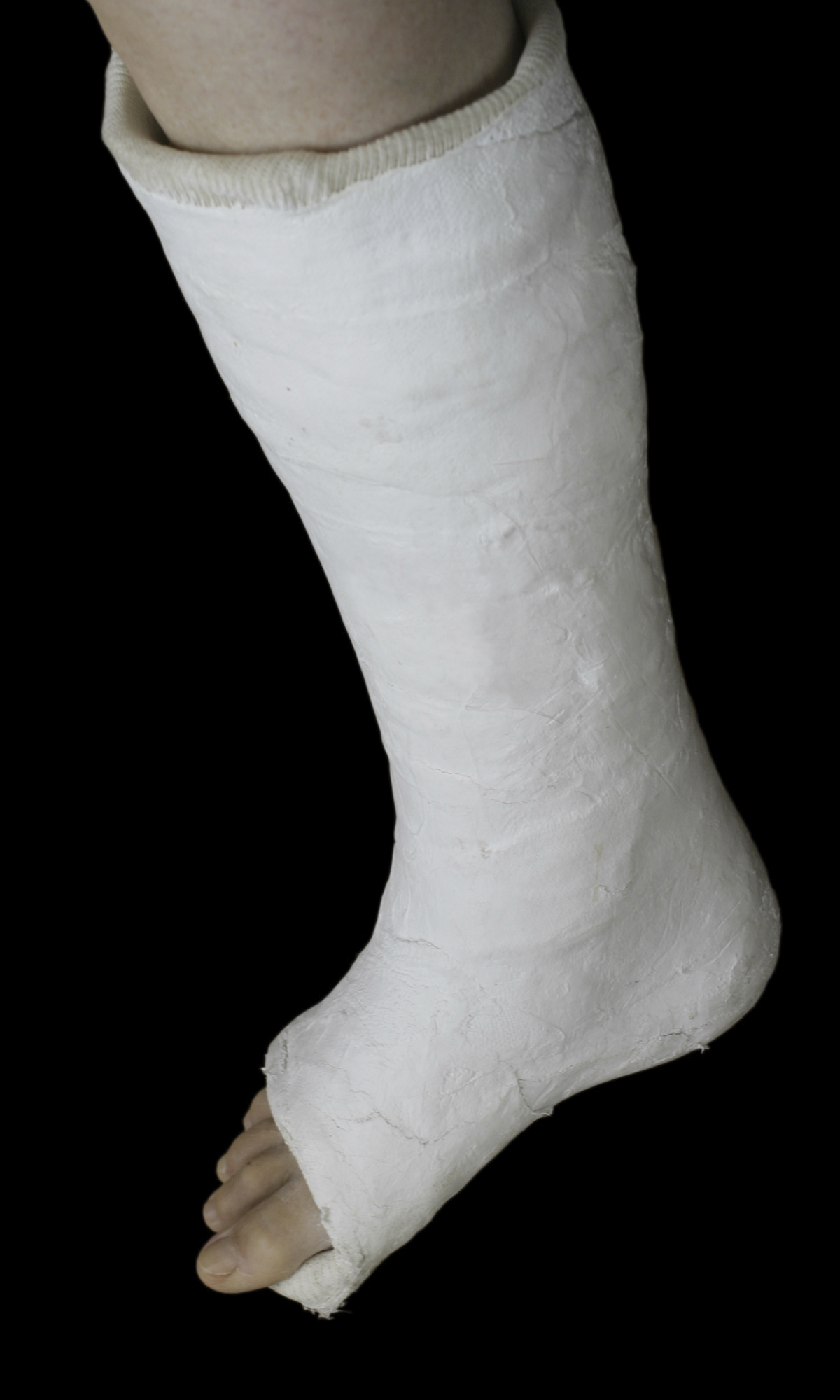 The pain and discomfort may be overwhelming if you experience a broken ankle. Research has shown that treatment needs to be started as quickly as possible and this may extend for a period of six to twelve weeks. There are specific symptoms that are associated with a broken ankle, including swelling and bruising, the inability to stand or walk on your foot, and the ankle appearing deformed if the bone is dislocated. An effective diagnosis is typically achieved by having an X-ray performed to determine the severity of the fracture. If the break is not severe, the patient may be fitted with a protective boot or a plaster cast in addition to using crutches, which are designed to keep the weight off the ankle. For more severe fractures, the bone may have to be realigned through manual manipulation or surgery, which may require wires and screws to be inserted into your foot. Please consult with a podiatrist if you feel you have broken your ankle to determine the proper treatment options.
The pain and discomfort may be overwhelming if you experience a broken ankle. Research has shown that treatment needs to be started as quickly as possible and this may extend for a period of six to twelve weeks. There are specific symptoms that are associated with a broken ankle, including swelling and bruising, the inability to stand or walk on your foot, and the ankle appearing deformed if the bone is dislocated. An effective diagnosis is typically achieved by having an X-ray performed to determine the severity of the fracture. If the break is not severe, the patient may be fitted with a protective boot or a plaster cast in addition to using crutches, which are designed to keep the weight off the ankle. For more severe fractures, the bone may have to be realigned through manual manipulation or surgery, which may require wires and screws to be inserted into your foot. Please consult with a podiatrist if you feel you have broken your ankle to determine the proper treatment options.
Broken ankles need immediate treatment. If you are seeking treatment, contact Dr. Kevin Davis from Davis Foot & Ankle Centers. Our doctor can provide the care you need to keep you pain-free and on your feet.
Broken Ankles
A broken ankle is experienced when a person fractures their tibia or fibula in the lower leg and ankle area. Both of these bones are attached at the bottom of the leg and combine to form what we know to be our ankle.
When a physician is referring to a break of the ankle, he or she is usually referring to a break in the area where the tibia and fibula are joined to create our ankle joint. Ankles are more prone to fractures because the ankle is an area that suffers a lot of pressure and stress. There are some obvious signs when a person experiences a fractured ankle, and the following symptoms may be present.
Symptoms of a Fractured Ankle
- Excessive pain when the area is touched or when any pressure is placed on the ankle
- Swelling around the area
- Bruising of the area
- Area appears to be deformed
If you suspect an ankle fracture, it is recommended to seek treatment as soon as possible. The sooner you have your podiatrist diagnose the fracture, the quicker you’ll be on the way towards recovery.
If you have any questions, please feel free to contact one of our offices located in Springfield, and White House, TN, . We offer the newest diagnostic and treatment technologies for all your foot care needs.
Read more about All About Broken AnklesThe Importance of Properly Caring for Diabetic Feet
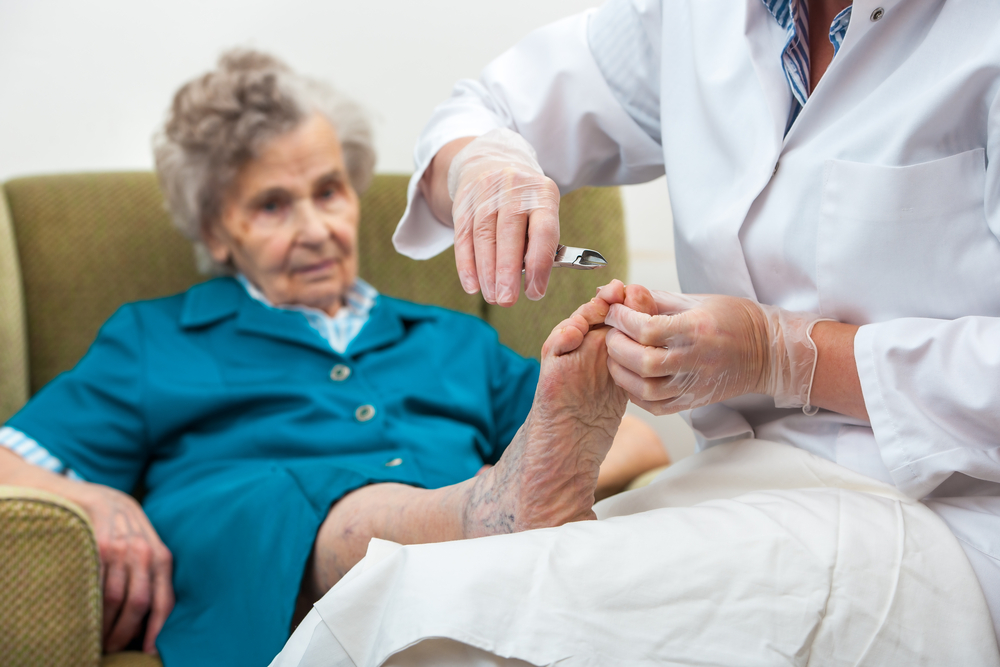 It’s important to properly care for the feet, especially for diabetic patients. Minor cuts and scrapes may be slow to heal, which is often due to the elevated insulin levels. These high levels may cause the nerves to become damaged, which may in turn cause a lack of feeling in the feet. Research has shown there are ways to possibly prevent specific foot conditions from occurring. This may be accomplished by having regular foot exams, wearing shoes that are designed for various foot ailments that may be present, or by performing low-impact exercise. The nerve damage that may occur is referred to as neuropathy, and can be very painful. If you are diabetic, it is strongly suggested that you visit a podiatrist frequently while also being sure to do daily foot inspections at home.
It’s important to properly care for the feet, especially for diabetic patients. Minor cuts and scrapes may be slow to heal, which is often due to the elevated insulin levels. These high levels may cause the nerves to become damaged, which may in turn cause a lack of feeling in the feet. Research has shown there are ways to possibly prevent specific foot conditions from occurring. This may be accomplished by having regular foot exams, wearing shoes that are designed for various foot ailments that may be present, or by performing low-impact exercise. The nerve damage that may occur is referred to as neuropathy, and can be very painful. If you are diabetic, it is strongly suggested that you visit a podiatrist frequently while also being sure to do daily foot inspections at home.
Diabetic foot care is important in preventing foot ailments such as ulcers. If you are suffering from diabetes or have any other concerns about your feet, contact Dr. Kevin Davis from Davis Foot & Ankle Centers. Our doctor can provide the care you need to keep you pain-free and on your feet.
Diabetic Foot Care
Diabetes affects millions of people every year. The condition can damage blood vessels in many parts of the body, especially the feet. Because of this, taking care of your feet is essential if you have diabetes, and having a podiatrist help monitor your foot health is highly recommended.
The Importance of Caring for Your Feet
- Routinely inspect your feet for bruises or sores.
- Wear socks that fit your feet comfortably.
- Wear comfortable shoes that provide adequate support.
Patients with diabetes should have their doctor monitor their blood levels, as blood sugar levels play such a huge role in diabetic care. Monitoring these levels on a regular basis is highly advised.
It is always best to inform your healthcare professional of any concerns you may have regarding your feet, especially for diabetic patients. Early treatment and routine foot examinations are keys to maintaining proper health, especially because severe complications can arise if proper treatment is not applied.
If you have any questions please feel free to contact one of our offices located in Springfield, and White House, TN, . We offer the newest diagnostic and treatment technologies for all your foot and ankle needs.
Read more about How to Care for Diabetic Foot